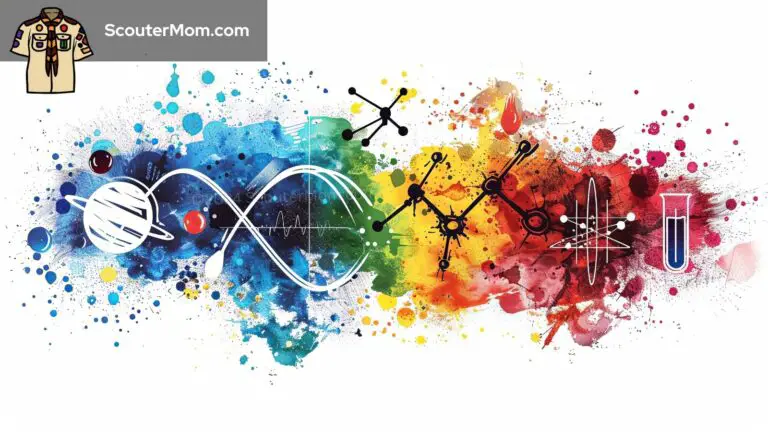There are some science related requirements for Cub Scout adventures and supplemental awards which involve experiments and science investigations. If you don’t have a background in science, helping your Cub Scout out with this might seem a little intimidating. But the scientific method is really very basic and only involves a few simple concepts.
The scientific method explained below is the series of steps scientists use to determine if they can prove something to be true or not. These are the basic parts of the scientific method.
A Simple Explanation of the Scientific Method
Problem
The problem is the question being addressed. It could be something like “Why is the sky blue?” or “Does ABC brand ketchup really come out of the bottle slower than XYZ brand like they claim in their commercials?”
Hypothesis
The hypothesis is a guess. It is what we think the answer to the problem might be. At this point, we don’t know if the hypothesis is correct or not because we haven’t done any testing.
Procedure
The procedure is the series of steps we are going to take to try to prove the hypothesis correct. Scientists try to write very detailed procedures so that somebody who tries to repeat the experiment later will be able to repeat it exactly and (hopefully) duplicate the results. It is not unusual to have to run and change a procedure several times to get it written down specifically enough.
Data
The data is the information which is collected when the procedure is run. It could be a series of observations, such as noticing different colors in the sky at different times of day. Or it could be a lot of numbers, such as the time it takes for a bottle of ketchup to empty.
Results
The data is grouped and organized into results so it is easier to figure out what it means. Results are often presented as a graph.
Conclusion
After the results are organized, we can draw a conclusion. The conclusion can be “My hypothesis was correct”, “My hypothesis was incorrect”, or even “I’m not sure if my hypothesis was correct”. None of these conclusions should be seen as failures. Sometimes scientists learn more from an incorrect hypothesis than they do from a correct hypothesis.
In any of these cases, the conclusion should also include a reason why you thought the hypothesis was correct or incorrect. If you have a possible explanation, you should also include that, so people who do similar experiments in the future can understand why your results might have come out the way they did.
Related Resources for the Scientific Method

Cub Scout Science Experiments and Ideas
Cub Scouts love science! It is almost like magic to them. You can spark and interest in science with these Cub Scout science experiments and ideas.
Ziploc Bag vs Pencil Experiment
This simple experiment to demonstrate the scientific method is always a hit with the scouts. The results are not usually what they expect.
Science Program Feature for Scouts BSA
The Science troop program feature encourages Scouts to ask and investigate questions about the world. They learn how to form a hypothesis and test it.
Nova Awards Program (STEM Award)
STEM stands for science, technology, engineering, and mathematics. The NOVA Awards program combines knowledge of STEM concepts with hands on activities.



Leave a Reply